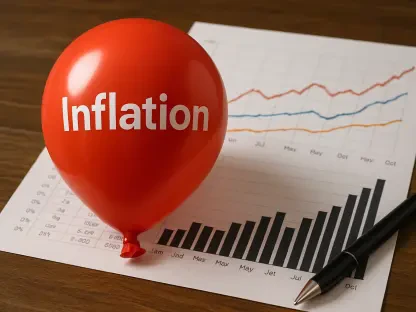As the global oil market navigates a complex landscape, hints of immediate supply tightness have provided some support to oil prices this week. However, these gains were tempered by a notably downgraded global demand forecast from OPEC for the coming years. On Wednesday, Brent futures recorded a mild uptick, rising by 14 cents to $72.03 per barrel, while U.S. West Texas Intermediate (WTI) crude similarly edged up by 13 cents to $68.25 per barrel. The physical market’s tightness has served to balance the more bearish sentiment surrounding demand, largely driven by economic vulnerabilities in key consuming nations such as China.
Market Consolidation and China’s Economic Uncertainties
Lack of Chinese Stimulus Raises Doubts
Industry analysts like Yeap Jun Rong from IG have emphasized that current oil prices might remain in a state of consolidation for an extended duration. They cautioned that recent price surges have consistently been followed by sell-offs, an indication of underlying market skepticism. One critical factor contributing to this uncertainty is China’s limited fiscal stimulus, which continues to cast shadows over the future of oil demand. The lack of significant economic intervention by China leaves a gap in what has traditionally been a buoyant market, given its status as one of the world’s largest oil consumers.
This situation is further complicated by the potential increase in U.S. oil production on the horizon. Analysts speculate that if former President Trump were to return to office, his administration might adopt policies fostering greater oil output. Coupled with OPEC+’s plans to potentially ramp up production, this could introduce additional complexities into an already delicate market balance. Such conditions raise significant questions about the stability of global oil prices and the resilience of demand forecasts in light of evolving geopolitical and economic landscapes.
OPEC’s Downgraded Demand Forecasts
OPEC’s latest monthly report delivered sobering news to the oil market, revealing that global oil demand is now expected to grow by 1.82 million barrels per day (bpd) in 2024. This figure marks a reduction from the previously anticipated 1.93 million bpd. A considerable portion of this downgrade can be attributed to China’s ongoing economic softening, which has significant ramifications for overall demand projections. Additionally, OPEC has revised its 2025 demand growth forecast down to 1.54 million bpd from an earlier projection of 1.64 million bpd.
The International Energy Agency (IEA), which often adopts a more conservative outlook, is poised to release its updated demand forecast soon. These revisions from both entities are likely to influence market sentiment and trading strategies, as investors and analysts alike grapple with the implications of reduced demand in the face of potential supply increases. The evolving demand landscape underscores the complexities that the oil market must navigate as it looks to balance production with consumption in a shifting global economic environment.
U.S. Policies and Geopolitical Tensions
Possible Impact of U.S. Political Changes
Barclays analysts have suggested that a potential re-election of Trump might not bring drastic changes to oil market fundamentals in the short term. They pointed out that under the current Biden administration, the number of approved drilling permits has actually increased. This implies that a “drill, baby, drill” strategy re-entering U.S. policy might not dramatically alter price dynamics immediately. However, Barclays analysts also warned of the looming threat posed by geopolitical tensions, particularly those involving Iran and Israel. Such conflicts have the capacity to disrupt oil supplies and create volatile swings in market prices.
In addition to geopolitical factors, two U.S. central bankers have indicated that ongoing interest rates are playing a significant role in curbing inflation. They also suggested a willingness to consider further rate cuts by the Federal Reserve. Such measures could stimulate economic activity and, in turn, boost energy demand, potentially exerting upward pressure on oil prices. The recent rate adjustment brought the policy rate down to a range of 4.50%-4.75%, a move that market participants are closely monitoring for broader economic impacts.
Delayed Inventory Reports and Market Reactions
Navigating through a complex landscape, the global oil market this week showed signs of immediate supply tightness, offering some support to oil prices. Despite this, gains were limited due to a significant downgrade in the global demand forecast from OPEC for the next several years. On Wednesday, Brent futures saw a modest rise, increasing by 14 cents to settle at $72.03 per barrel. Meanwhile, U.S. West Texas Intermediate (WTI) crude also experienced a slight uptick, climbing by 13 cents to reach $68.25 per barrel. The tightening of the physical market has helped to counterbalance the generally bearish outlook on demand. This pessimism is largely driven by economic vulnerabilities in major consuming countries, particularly China. These factors suggest a tug-of-war between supply constraints and weakened demand prospects, indicating a cautiously uncertain future for the oil market. The interplay between these elements will likely continue to influence oil prices in the near term as the industry watches how economic conditions unfold.









